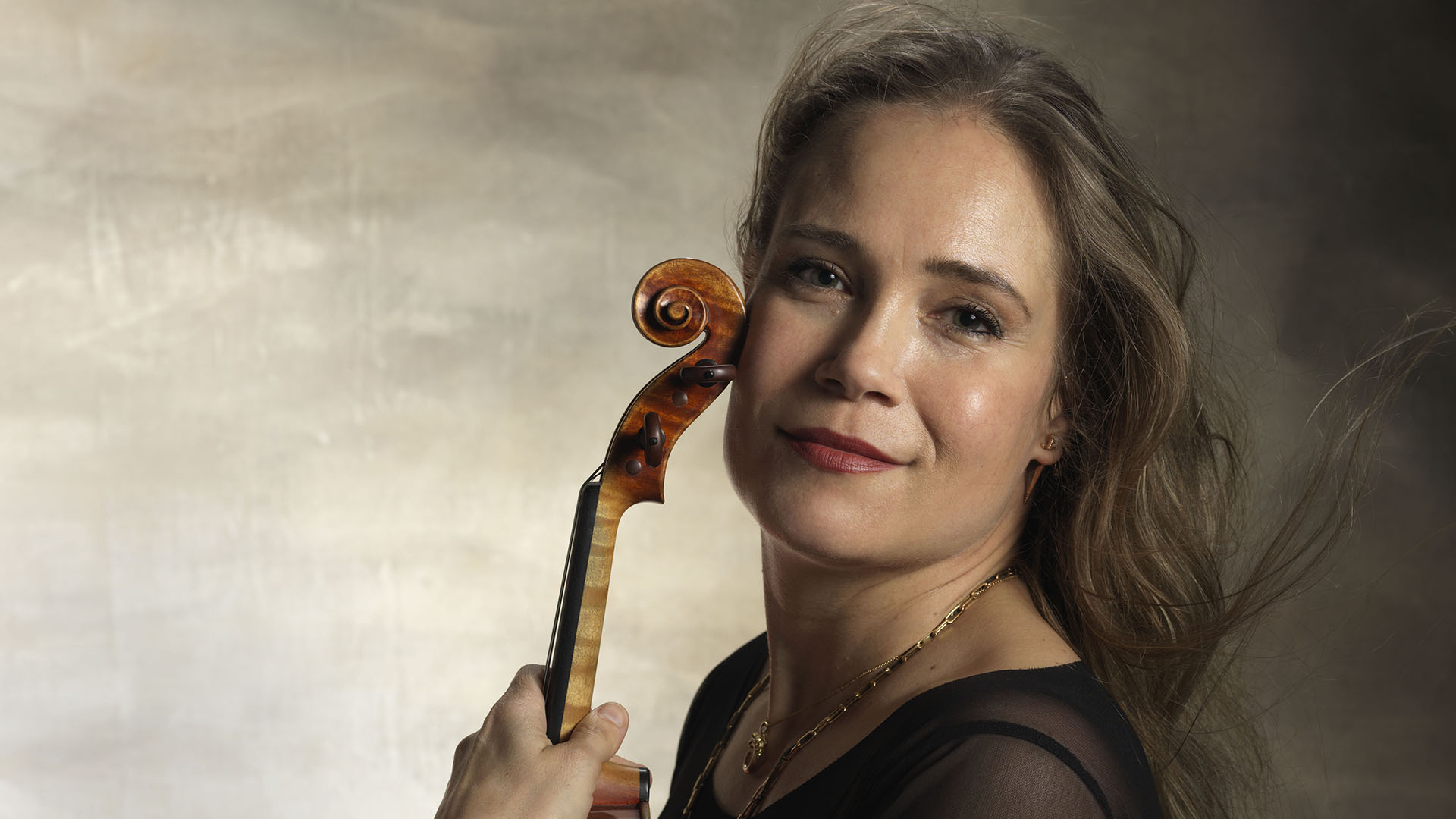Last autumn, the Los Angeles Times lauded violinist Leila Josefowicz’s performance of John Adams’ Violin Concerto: “A daring, probing, thinking, dancing, spectacularly virtuosic soloist… she played each turn of phrase, each gesture, as though it were a new thought or feeling that suddenly astonished her” (Los Angeles Times, 9.11.2021).
Good news for lovers of mysticism and mysteries! The Helsinki Philharmonic Orchestra will perform no less than three symphonies by Anton Bruckner this season. The series begins with one of his most popular, the 4th Symphony – a mysterious relation to ancient tales.
Susanna Mälkki
Susanna Mälkki has been Chief Conductor of the Helsinki Philharmonic Orchestra (HPO) since 2016. Her leadership has guided the orchestra and audiences the world over, through different musical territories and thematic seasons. Mälkki ends her highly-acclaimed tenure as the HPO’s Chief Conductor with a focus on Finland and Finnish music, as the orchestra is celebrating its 140th anniversary.
One of the most celebrated conductors of her generation, Mälkki regularly works with the world’s most illustrious orchestras such as New York Philharmonic, Berlin Philharmonic and others, and renowned opera houses, e.g. the Royal Opera House and Gran Teatre del Liceu in Barcelona. This season she will also lead the HPO on tour to the prestigious Lucerne and Edinburgh festivals, New York’s Carnegie Hall and Washington’s Kennedy Centre.
During her term, the Helsinki Philharmonic Orchestra has won a reputation for its unusually rich and varied programming, including many notable first performances, joint international commissions and award-winning records. Premieres conducted by Mälkki have included Kaija Saariaho’s Vista, which is dedicated to her, Felipe Lara’s Double Concerto and Enno Poppe’s FETT. Special projects have been launched, such as a series of commissions called The Helsinki Variations celebrating 100 years of Finnish independence, and HUOM – History’s Unheard Orchestral Music, in collaboration with historians and musicologists.
Mälkki’s many distinctions have included the Pro Finlandia Medal – one of Finland’s highest honours – and she is a Chevalier of the Légion d’honneur in France.
Leila Josefowicz
“I was always attracted to contemporary music, or what seemed contemporary to me at the time. The unconventional and non traditional aspect definitely draws me in, perhaps because I think I had quite a conservative training, focusing on the great standard rep with the interpretations of the old masters in my ear,” said American-Canadian Leila Josefowicz in a Universal Music interview. Many composers (incl. Oliver Knussen, Marc Grey, Esa-Pekka Salonen, Colin Matthews and Steve Mackey) have written concertos for her, but back in 1993, that by Adams was a ground-shaking event for her. It came close, she said, to a religious experience, because never before had she worked with a living composer. All of a sudden the music came alive and began to breathe, and a new human being emerged with whom she could play.
Leila Josefowicz – who made her Carnegie Hall debut when she was only 16 and for a brief spell even worked as a model for Chanel – last appeared with the Helsinki Philharmonic Orchestra in spring 2017, as the soloist in Luca Francesconi’s Duende.
John Adams: Violin Concerto
John Adams (1947–) is a very liberal-minded composer. As a student of orchestral conducting, clarinet and composition at Harvard he had difficulty adopting the serialist approach to composition prevalent at the time and gave electronics, aleatory and other methods a try before arriving at minimalism in the early 1970s. Since then, he has never looked back: minimalism is, for him, here to stay. Later, he has seasoned it with rhythmic energy, a rich world of harmony and orchestral invention strongly influenced by Late Romanticism. Many of his works also make allusions to Expressionism, Neoclassicism and even big-band swing. Adams is best known for his operas Nixon in China and The Death of Klinghoffer.
The three-movement violin concerto of 1993 follows the traditional quick-slow-quick format. It also has a solo cadenza at the traditional spot in the first movement. The second movement, titled Body through which the dream flows, is a chaconne and based on a poem by Robert Hass. The third movement, Toccare, is a virtuoso vehicle for the solo violin. The concerto won Adams the Grawemeyer Award in 1995.
Anton Bruckner: Symphony No. 4
The Austrian symphonist Anton Bruckner (1824–1896) has been likened to a medieval mystic: his music is timeless and meditative, in contrast to the tragic figure of the romantic artist. His symphonies flow along in broad rivers and waves.
Symphony no. 4 exists in at least seven versions – Bruckner having being oversensitive to criticism and ready to revise what he had written. The first version dates from 1874 and he sent the last to the publisher in 1888. The premiere in 1880 got a good reception, which was rare for Bruckner, since the operetta-loving Viennese audience did not immediately appreciate his novel concept of the symphony.
The music of Bruckner is not usually sentimental or descriptive, but the fourth symphony is an exception. The word “Romantic” in the title refers not to love but to a medieval knight’s tale. Of the first movement Bruckner wrote, “medieval city – daybreak – morning calls sound from the city towers” and of the second “song, prayer serenade”. The third depicts hunting: dancing, eating and merry-making, but the meaning of the grand finale is left for the listener to decide.

